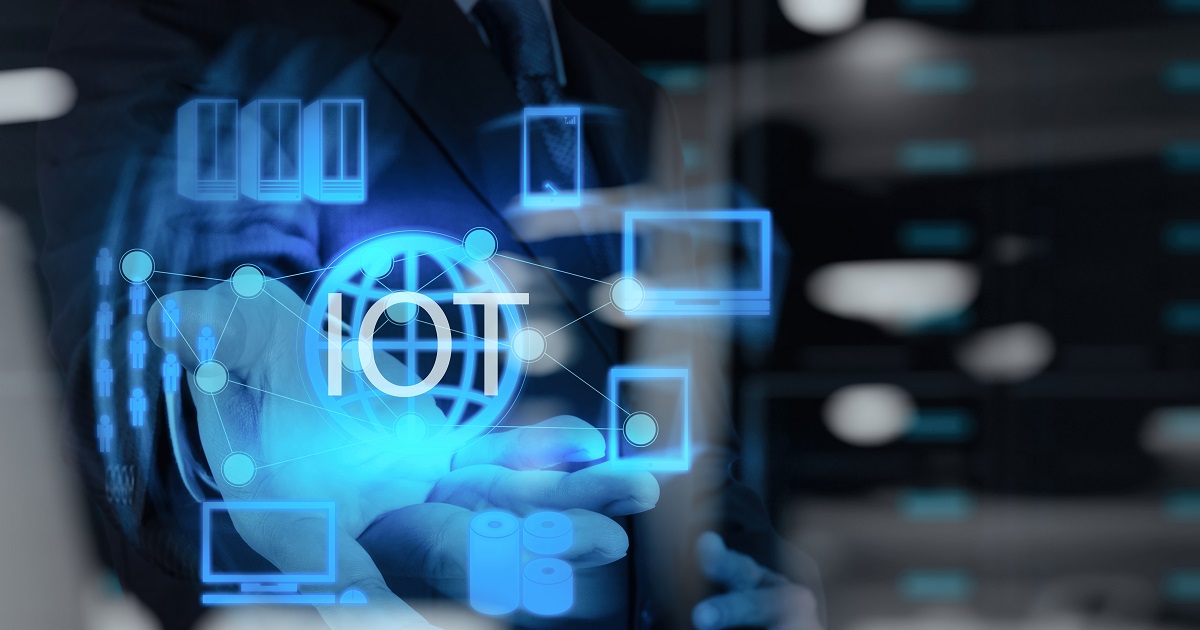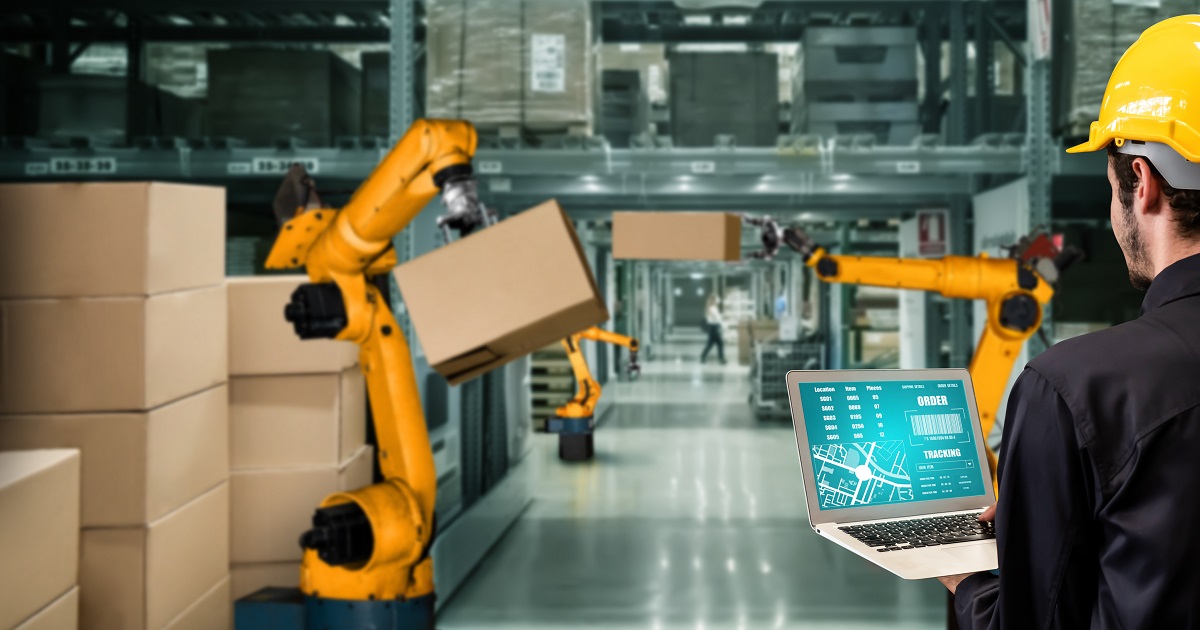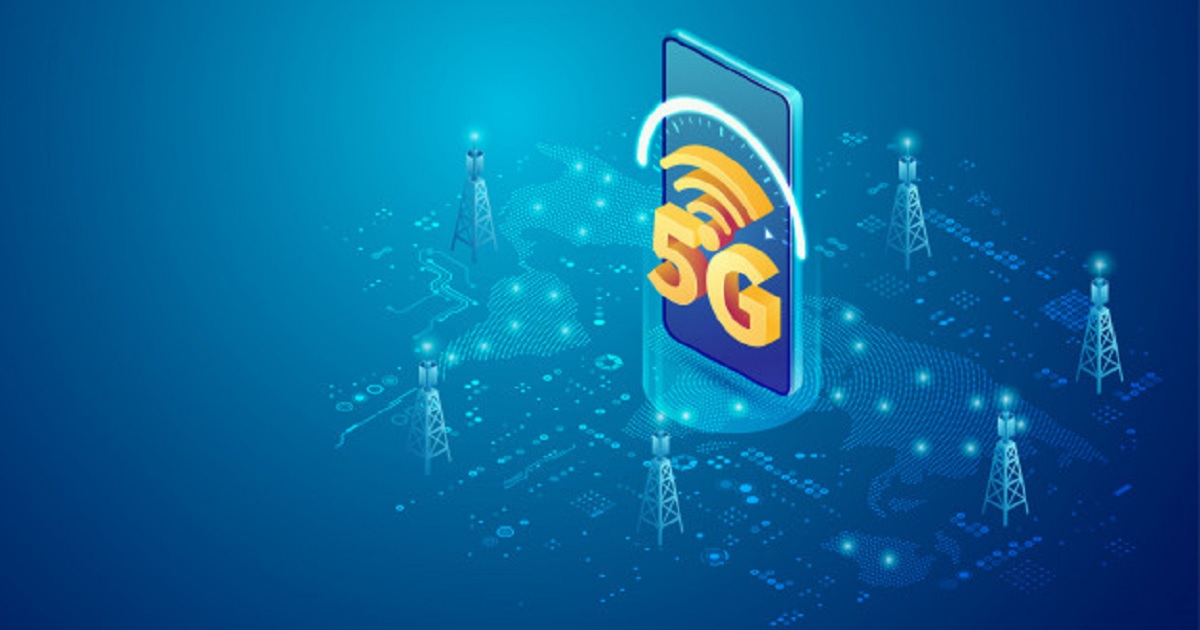
IoT Security
Article | July 5, 2023
Explore the IoT certifications and grow your skills with the transforming landscape. Including Iot security certifications, this curated list will help you to boost career in the IoT industry.
As the Internet of Things continues to expand its reach across industries, the need for robust security measures to safeguard connected devices and data has become paramount. With IoT systems' growing complexity and interconnectivity, organizations seek professionals with specialized knowledge and expertise in IoT security. In response to this demand, various certifications have emerged to validate individuals' skills and provide them with a competitive edge in the IoT industry. In this article, we will explore some key IoT security certifications that can significantly enhance one's career prospects and contribute to IoT solutions' safe and secure deployment.
1. IoT Security Certification and Cybersecurity
Intertek’s IoT Security Certification and Cybersecurity provides IoT certification and testing services to validate the security of connected products. Securing endpoints and ecosystems has become crucial with the rapid growth of the Internet of Things. Intertek's total quality assurance approach involves understanding the product, use cases, integration with other systems, and developing a roadmap to ensure compliance with industry standards and regulations. Their IoT security and cybersecurity experts guide clients in choosing the most relevant program for their product and target markets, instilling confidence in product security. Intertek offers services such as the Cyber Assured Program, vulnerability assessments, penetration testing, testing to standards like ANSI/UL 2900 and IEC 62443, connected medical device security, industrial automated control systems security (IEC 62443), and advisory services. Intertek's expertise helps clients address cybersecurity risks and ensure the security of their IoT products.
2. Securing IoT - Build secure IoT solutions: 2-in-1
The Securing IoT: Build Secure IoT Solutions: 2-in-1 course is a comprehensive training program designed to help IoT product designers, IoT product managers, IT security professionals, and security engineers build secure and robust Internet of Things systems. The course consists of 'Fundamentals of IoT Security' and 'Security Engineering for the IoT.' The learners will delve into IoT security architectures, regulations, and standards. Privacy concerns and Privacy by Design principles and practical examples of conducting Privacy Impact Assessments are addressed. Cryptographic solutions, identity and access management, and key management solutions are explored, along with the cloud's secure connectivity, processing, and storage of data. By the end of the program, participants will have the skills to identify threats to their organization's data and IoT systems, employing design techniques, applied cryptography, and secure cloud connectivity for robust security.
3. IOT Security Professional (ICIP)
The IoT Security Professional (ICIP) program offered by ISAC is designed to provide participants with a comprehensive understanding of cyberattacks on IoT and SCADA systems. The training focuses on offensive testing techniques to better understand and combat hack and malware attacks. Participants will learn about discovering sensitive devices, network hacking via IoT, hacking smart devices, and controlling SCADA systems. The program includes case studies on malware like WannaCry and Crash Override and defensive measures like threat intelligence and endpoint protection. The course suits security researchers, forensic investigators, security teams, law enforcement agencies, and military personnel. Successful completion of the program grants a Clean Exit Professional Ethics Certification and inclusion in the National Security Database.
4. Internet of Things Security Expert Training
The Internet of Things Security Expert course offered by Cognixia is a comprehensive training program designed for professionals seeking to enhance their knowledge of IoT security. The course covers various IoT security platforms and provides hands-on training with relevant tools. It consists of three major modules: python, advanced IoT training and certification, and IoT Security. The Python module familiarizes candidates with the versatile programming language and its applications in IoT development. The Advanced IoT Training and Certification module covers IoT ecosystems' architecture, development, deployment, and security with real-life case studies. The IoT Security module focuses on securing IoT devices, covering architecture, practical attacks, vulnerability disclosure, and securing connected products. The course offers lifetime access to learning materials and round-the-clock technical support.
5. IOT Analyst Certification
One of the online IoT certification courses, the IT Analyst Certification is a 12-month program that focuses on combining IoT with Analytics to unlock valuable data from connected IoT devices. The course comprises three courses covering data acquisition, exploratory analysis, cleaning, and final analysis for IoT systems. It also teaches how advanced analytics and machine learning algorithms can be applied to build complex IoT solutions. The program is suitable for students from all backgrounds, and no prior knowledge of analytics or IoT is required, although basic quantitative skills are beneficial. After completing the curriculum and passing the certification test, students receive the IOT Analyst Certification, enabling them to process and analyze data from IoT sensors and become proficient in IoT analytics. The certification opens up opportunities in the fast-growing Big Data and Analytics industry, where IoT analytics is widely applied to predict future technology trends.
6. IOT Professional Certification
The IOT Professional Certification offered by Jigsaw Academy is a comprehensive program designed to help individuals master the implementation of IoT using Arduino. This 12-month online iot certification course uses the Arduino platform to build IoT solutions from scratch. The program consists of four courses covering various IoT aspects, including sensor-connected devices and gateways. Students will engage in hands-on exercises, real-life case studies, and a capstone project to apply their knowledge effectively. Upon completion, students receive a certification that validates their skills in building and applying IoT solutions, setting up IoT Cloud for data storage and analysis, and proficiency in Arduino programming language. The IOT Professional Certification equips individuals with the necessary skills and knowledge to excel in the high-demand field of IoT and opens up better job prospects.
7. IoT and its Applications
TCS iON Digital Learning Hub offers the 'IoT and its Applications' certificate course, providing learners with a comprehensive understanding of the fundamentals of the Internet of Things. The course spans 5 to 6 months, delivered in English through digital lectures, e-learning resources, and community-based virtual classrooms. Through industry assignments and expert-led instruction, participants gain theoretical and practical insights into IoT applications. Upon completion, learners receive a verifiable digital certificate and gain industry-level skills required for test engineers or computer programmers. This course helps learners grasp IoT theories and practical applications, offering valuable career opportunities.
Conclusion
In an era where the Internet of Things is transforming industries and revolutionizing the way, we interact with technology, ensuring the security of IoT systems has become a critical imperative. The certifications discussed in this article represent a selection of key credentials available to professionals seeking to boost their careers in the IoT industry. By obtaining these certifications, individuals can validate their expertise in IoT security, demonstrating their commitment to upholding best practices and safeguarding the integrity of connected devices and data.
As the demand for IoT security professionals continues to rise, these certifications will serve as powerful assets, opening doors to exciting opportunities and positioning individuals as trusted experts in the ever-evolving field of IoT security. By investing in these certifications, professionals can take significant strides toward advancing their careers and contributing to the secure and responsible growth of the IoT ecosystem.
Read More

Enterprise Iot
Article | July 20, 2023
Introduction
Automation, interconnectivity, machine-learning, and real-time data are part of Industry 4.0, a new phase in the Industrial Revolution. Industry 4.0, which includes IIoT and smart manufacturing, combines physical production and operations with smart digital technologies. It creates a more holistic and linked environment for manufacturing and supply chain management organizations.
In today's production environment, "automation" has a new, more advanced meaning than it has in the past. Industry 4.0 refers to the necessity of lean, efficient operations and the function of sustaining and improving production. In contrast, IIoT distinguishes manufacturing gadgets from consumer products that can connect wirelessly to internal networks and the internet.
IIoT Powering the Fourth Industrial Revolution
Manufacturing, logistics, oil and gas, transportation, mining, aviation, energy, and other industries use the IIoT. Its main goal is to improve operations, mainly through process automation and maintenance. IIoT capabilities improve asset performance and allow for improved maintenance management. The introduction of Industry 4.0 technologies marked a significant milestone in the human-machine relationship's history. I4.0 was first talked about in 2011. Since then, it has proliferated because of new technologies such as cyber-physical systems, IT/OT convergence, AI/ML, Blockchain, and AR/VR.
Data is at the heart of the Fourth Industrial Revolution. The growth of the Internet of Things (IoT) is one of the main reasons behind this. The IoT is making a significant contribution in making businesses smarter and improving their workflows. Moreover, more data is being made and used by connected devices than ever before, from the home to the factory.
In order to thrive in the fourth industrial revolution, businesses must embrace new technologies. The general structure of IIoT applications is defined by standards-based industrial system architectures such as the Industrial Internet Consortium's Reference Architecture. Sensors and IoT devices, IoT middleware platforms, IoT gateways, edge/cloud infrastructures, and analytics applications are all part of the stack.
The Future of the IIoT
The Industrial Internet of Things (IIoT) is primarily regarded as one of the most significant current and future trends influencing industrial companies.
To comply with new rules, industries are rushing to upgrade their systems, machinery, and equipment. This is necessary to keep up with market volatility and deal with disruptive technologies.
Safety, efficiency, and profitability have all improved dramatically in industries that have adopted IIoT. As IIoT technologies become more widely adopted, this tendency is projected to continue.
Conclusion
The fourth industrial revolution has drastically altered our perceptions of things in the workplace. At a rapid rate, capitalists are becoming more interested in sophisticated ideas.
The way forward is to embrace existing and emerging technology throughout fundamental operations to unleash more enticing possibilities. It emphasizes the importance of comprehending the impact collaborative ecosystems can have as well as how they will become a major differentiator for generating value with a better-trained workforce.
Read More

Industrial IoT, IoT Security
Article | July 11, 2023
The year 2020 was supposed to be a breakthrough year for many technologies but, most businesses have now been forced back into building an infrastructure to transit their workforce to work remotely and ensure continuity of workflow. Nevertheless, an unprecedented set of events have pushed several industries to accelerate the adoption of technologies as they continue to work from home.
5G and Wi-Fi 6 are two tech advancements that have been turning eyes around the world since their introduction. The two wireless technologies are well on their way to revolutionize the Internet of Things as businesses move fast towards digitization and the world is excited.
Table of Contents:
- Wi-Fi 6: A Breakthrough in Wireless Technology
- 5G: For a Better Connected World
- How are Wi-Fi 6 and 5G Transforming the IoT?
- 5G and Wi-Fi 6: Rivals or Allies?
Wi-Fi 6: A Breakthrough in Wireless Technology
The next-generation Wi-Fi with boosted speed was introduced last year to meet the demand for faster internet amongst the rising internet users. But, Wi-Fi 6 is simply more than a tweak in the speed.
Technically called 802.11ax, Wi-Fi 6 is the advancement in the wireless standard doing the same basic things but with greater efficiency in the device-dense areas, and offering much greater bandwidth than its predecessor 802.11ac or Wi-Fi 5. Wi-Fi 6 promises a speed up to 9.6 Gbps up four times than that of Wi-Fi 5 (3.5Gbps). In reality, this is just a theoretical maximum that one is not expected to reach. Even still, the 9.6Gbps is higher speed and doesn’t have to go to a single device but split up across a network of devices.
A new technology in Wi-Fi 6 called the Target Wake Time (TWT) lets routers set check-in times with devices, allowing communications between the router and the devices. The TWT also reduces the time required to keep the antennas powered to search for signals, which in turn also improves battery life.
Wi-Fi 6 also comes with a new security protocol called WPA3, making it difficult to hack the device passwords by simple guesswork.
In short, Wi-Fi 6 means better speeds with optimized battery lives, and improved security.
5G: For a Better Connected World
5G is the next in line to replace 4G LTE. While Wi-Fi covers small scale internet requirements, cellular networks like 5G are here to connect everyone and everything virtually on a larger scale.
The technology is based on the Orthogonal frequency-division Multiplexing (OFDM) that reduces interference by modulating a digital signal across several channels. Ability to operate in both lower bands (like sub-6 GHz) and mmWave (24 GHz and above), 5G promises increased network capacity, low latency and multi-Gbps throughput. 5G also uses the new 5G NR air interface to optimize OFDM to deliver not just better user experience but also a wider one extending to many industries, and mission-critical service areas.
The 5G technology, in a nutshell, has brought with it ultra-high speeds, increased and scalable network capacity, and very low latency.
How are Wi-Fi 6 and 5G Transforming the IoT?
5G and Wi-Fi 6 will fill up the speed gaps that our existing networks are not able to especially, in crowded homes or congested urban areas. It's not just about the speed. The two wireless technologies will increase network capacity and improve signal strengths.
On the business front, 5G and Wi-Fi 6 are both living up to the hype they created since their introduction.
Wi-Fi 6 has emerged, as the enabler of converged IoT at the edge. It has put IT into OT applications, connected devices and processed data from devices such as IP security cameras, LED lighting, and digital signage with touch screen or voice command. Wi-Fi 6 can now be used in office buildings for intelligent building management systems, occupancy sensors, access control (smart locks), smart parking, and fire detection and evacuation.
It’s (Wi-Fi 6) built for IoT. It will connect many, many more people to mobile devices, household appliances, or public utilities, such as the power grid and traffic lights. The transfer rates with Wi-Fi 6 are expected to improve anywhere from four times to 10 times current speeds, with a lower power draw, i.e. while using less electricity.
- Tom Soderstrom, IT Chief Technology and Innovation Officer at NASA’s Jet Propulsion Laboratory (JPL)
Similarly, 5G will open doors for more devices and data. It will increase the adoption of edge computing for faster data processing close to the point of action. The hype around 5G is because of the three key attributes it comes with: enhanced mobile broadband (eMBB), ultra-reliable low-latency (uRLLC), and massive IoT device connectivity (mMTC). But there is the fourth attribute that sets it apart from its predecessor: use of a spectrum that operates at the low-end frequency range (typically 600 MHz). Called as ‘low-band 5G’, it delivers high speeds with signals that go for miles without propagation losses and ability to penetrate obstacles. The 5G operates in the new millimetre-wave bands (24 to 86 GHz) delivering more capacity to enable many low-power IoT connections.
If we were to point down the benefits, these two wireless technologies are bringing to the Internet of Things those would be:
Increased Human-Device Interactions
Increased Data and Devices
More IoT investments
Advancing to the Edge
Acceleration towards Industrial IoT
Enhanced use of IoT devices
Better VUI
5G and Wi-Fi 6: Rivals or Allies?
In February, Cisco estimated that by 2023 M2M communications will contribute to 50% or about 14.7 billion of all networked connections. Cisco’s Annual Internet Report reveals that 5G will enable new IoT applications with greater bandwidth and lower latencies and will accelerate innovations at scale. The same report estimates that 10.6% of global mobile connections in 2023 will be 5G, while Wi-Fi 6 hotspots will be 11.6% of all public Wi-Fi hotspots growing 13 times from 2020 through 2023.
Wi-Fi6 will serve as a necessary complement to 5G. A significant portion of cellular traffic is offloaded to Wi-Fi networks to prevent congestion and degraded performance of cellular networks (due to demand).
- Thomas Barnett, Director of Thought Leadership, Cisco Systems
The two technologies are here to feed different data-hungry areas with gigabit speeds.
With lower deployment costs, Wi-Fi 6 will be dominating the home and business environments where access points need to serve more users covering devices like smartphones, tablets, PCs, printers, TV sets, and streaming devices. With an unlicensed spectrum, the performance of Wi-Fi 6 depends on the number of users, that are using the network at the same time.
5G, with its longer range, will deliver mobile connections and accelerate smart city deployments and manufacturing operations. Like LTE, 5G speeds will depend upon users’ proximity to base stations and the number of people using that network.
The performance of the two depends largely on the area where they are being deployed. For instance, Wi-Fi can very well handle machine-to-machine communications in a managed manufacturing unit, whereas 5G can enhance campus-wide manufacturing operations efficiently. Businesses will have a decision to make which among the two wireless networks fulfils their data appetite.
In conclusion, the two wireless technologies continue to develop in parallel and causing the next big wave in the Internet of Things.
Read More

Industrial IoT
Article | July 20, 2022
IoT use cases span a variety of sectors and businesses. A typical Internet of Things (IoT) solution consists of a large number of heterogeneous IoT devices with sensors that generate data in a variety of formats at varying rates, which is then processed and analyzed to derive insights. In addition, IoT devices can connect to a network directly or through a gateway device, allowing them to communicate with one another and with cloud services and applications.
Create a layered architecture
An organization's IoT solution's architecture outlines its overall layout, including its physical components (such as sensors and actuators) and virtual components (like services and communication protocols). IoT system complexity can be managed by utilizing a modular strategy that divides the architecture into several layers and focuses on each tier separately.
IoT architectures have a tendency to outsource work to the edges of IoT networks (where the physical devices connect to the cloud). This aids data-driven IoT applications by lowering latency, enhancing privacy, and lowering bandwidth costs.
Devices layer
The device layer components include physical sensors and actuators that link to IoT devices and the IoT devices themselves. Although sensors and actuators are often not considered "smart" devices, they frequently connect to the architectural elements with higher computing power, either directly or indirectly (with the aid of gateway devices).
These devices often use over-the-wire protocols like Ethernet or wireless protocols like Bluetooth, Zigbee, WiFi, LTE, or RFID to transmit data.
Edge layer
The analytics and pre-processing services that are offered at the network's edge are included in the concept of the edge layer. This layer acts as a central integration point for subsequent layers (devices layer). For the upstream layers, it offers routing and device control features. In addition, this layer can be connected to pub-sub systems to convey events and listen in on them.
The size and heterogeneity of the devices and connectivity involved make designing data-driven IoT solutions hard. This article discusses some techniques for creating safe, adaptable, and scalable IoT architectures.
Read More